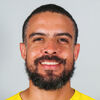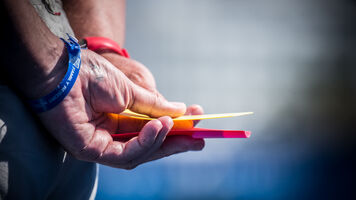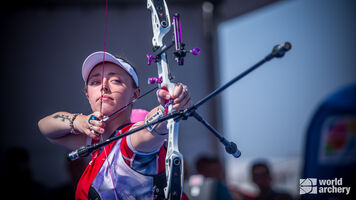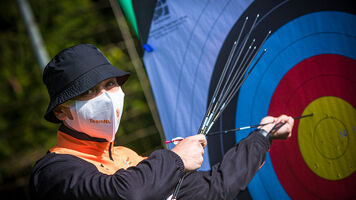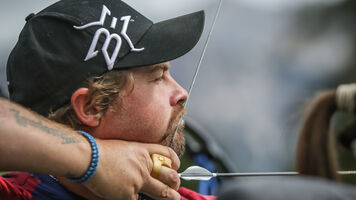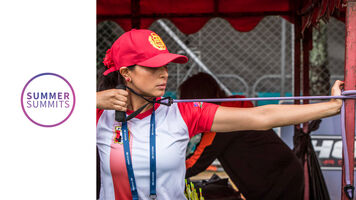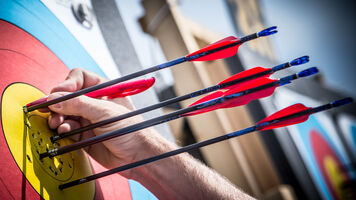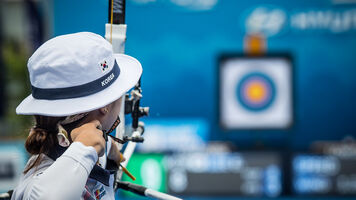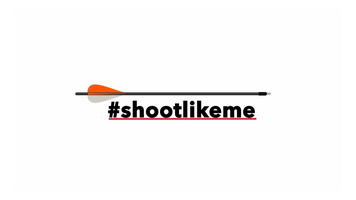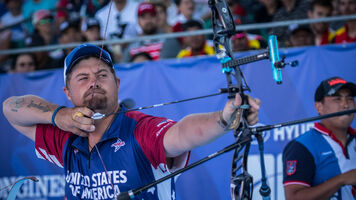Bernardo’s blog: the importance of visualisation (or how daydreaming can help your archery)
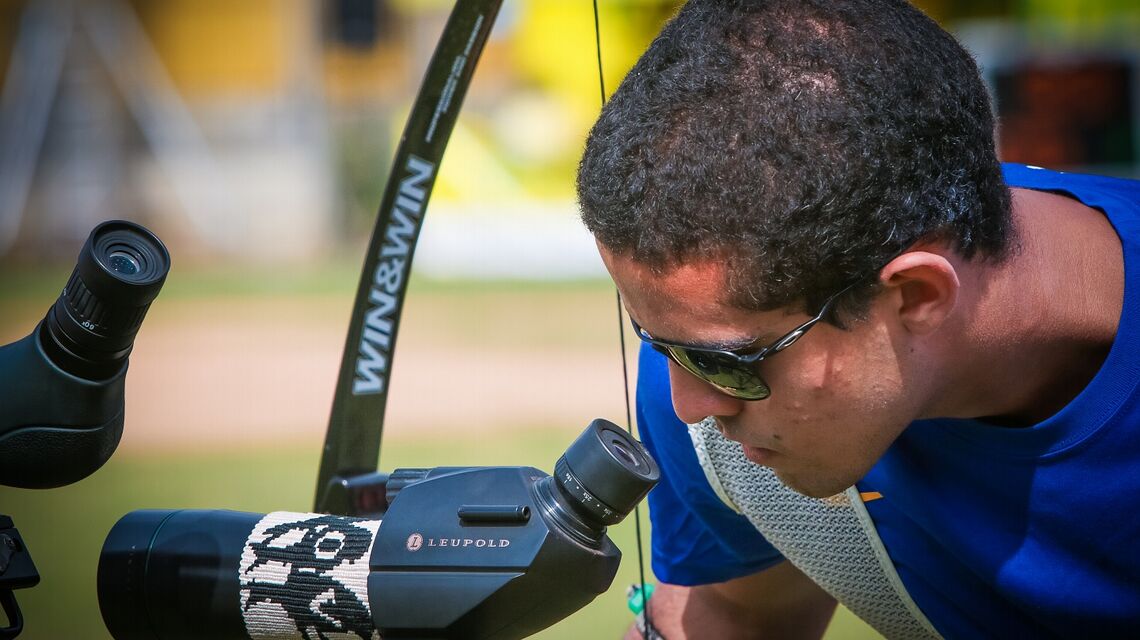
This blog was written by Bernardo Oliveira, offering insight into his life as an elite archer with the Brazilian national team during the COVID-19 pandemic.
If you’re anything like me, you’ve probably heard that archery is a mental sport. But what does that actually mean – and do you work on your mental game as much as you think you should?
I’m constantly asking myself the same question – and it’s okay if the answer is ‘no’.
I’m also fortunate enough to work with a sports psychologist who assists me with my mental game. But there are still ways to improve if you don’t have access to that kind of support. Practising imagery is within everyone’s reach.
Several months ago, World Archery held an online summit for athletes. One of the discussion topics was focused on imagery and led by one of the finest people I’ve met on the international circuit, Guy Matzkin.
It was awesome hearing Guy, a sports psychologist and the coach of the Israeli archery team, talk about the science behind visualisation and how it can be applied with greater efficiency to archery. Make sure to visit World Archery’s YouTube channel and watch it.
Before watching Guy’s lecture, I didn’t realise how much scientific and academic backing there is for imagery, which is basically thinking or imagining yourself in a situation to help train your body and mind.
The PETTLEP Model, presented during the summit, shows us that every detail matters. The smells, sounds, emotions and feelings; the actual movement of the shot during, and even wearing shooting gear (finger tab, quiver, shoes and jersey) while picturing something that is taking place entirely in your head all help immersion.
Guy played a short clip of the upcoming documentary Believe about Olympic archer Brady Ellison. In the video, Brady mentions the life-changing experience of finding Mental Management Systems, developed by Montreal 1976 rifle shooting Olympic Champion Lanny Bassham. Last year, I read Bassham’s book, With Winning in Mind.
Among the countless fascinating examples, explanations and recommendations in its pages, Bassham writes something so absurd that it’s almost funny. He says he has talked to 100s of athletes, who all agree that their game is at least 90% mental.
Yet when he asks them what percentage of their time and money is spent improving their mental game, the answer is always the same: very little, and often less than 10%.
Can you relate to that?
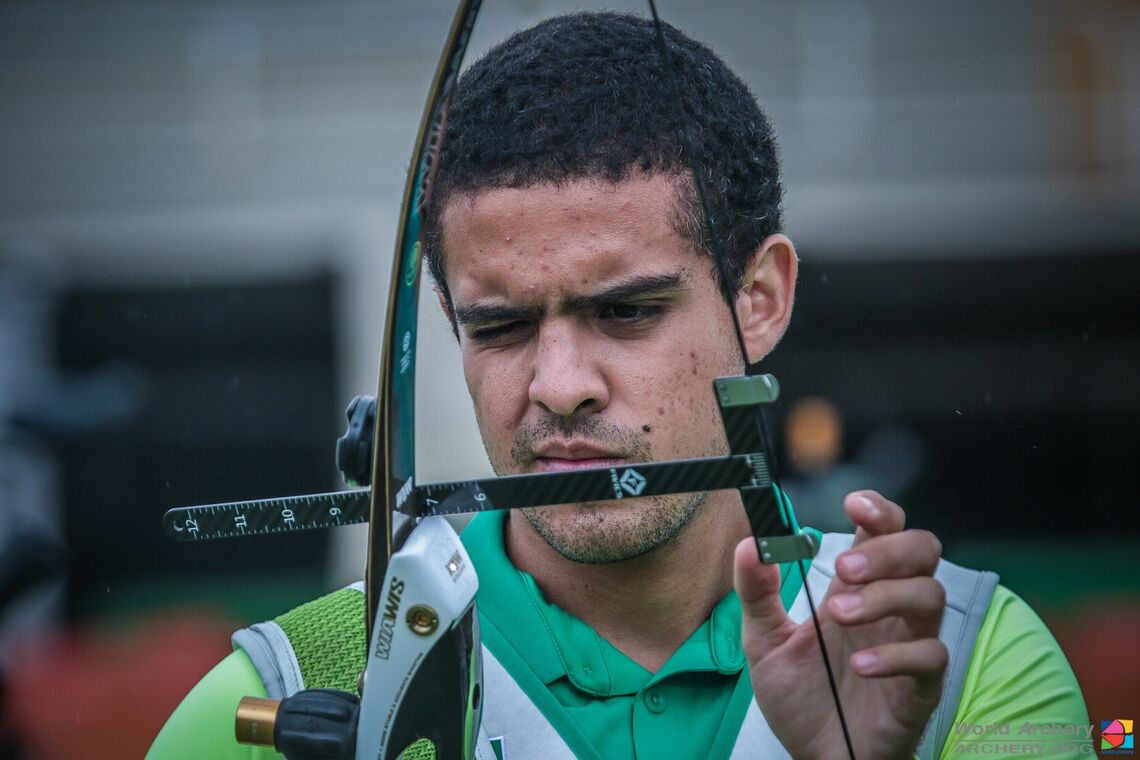
One of the things that Bassham writes about in his book is about a situation that I know well: someone who is having problems falling asleep just before a big competition. He talks about a rifle shooter who had the same issue.
What he told her was that if she was going to be awake anyway, she might as well do something productive: relax in bed and rehearse shooting well. The result was a drop in arousal and anxiety, allowing her to sleep more effectively.
One of the difficulties I came across when I first started using visualisation was the feeling that I wasn’t making any progress. I would sit down and practice imagery for days, but I didn’t feel any significant change.
This often made me want to stop. If this happens to you as well, you’ll have to trust me on this: Your results will eventually improve and only then, when you look back, will you realise how much things have changed. It’s all very subtle.
Another issue was filling the many blank spaces during my shot routine. Most of us end up doing things so automatically that we become unaware of how we actually perform some of the movements. I realised, for example, that I no longer knew what it was like to get the arrow from the quiver and load it onto the bow.
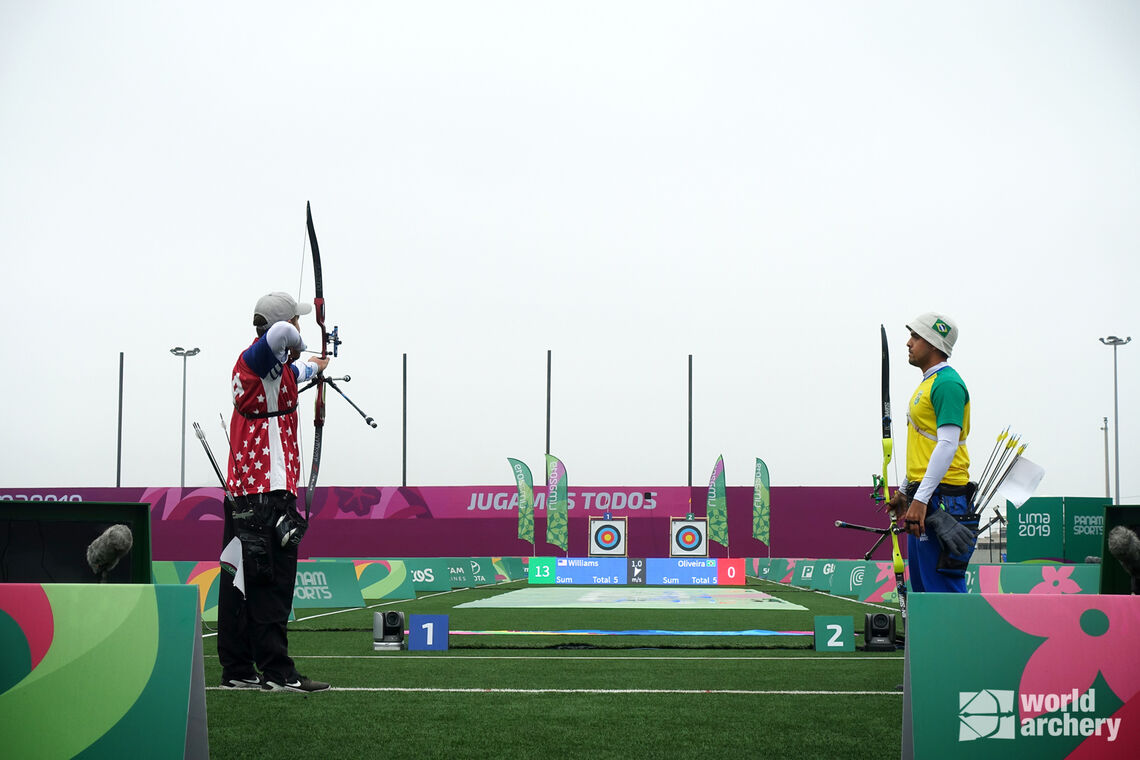
When I tried to imagine the process, it was as if I'd release the arrow and then another would magically appear nocked to the string and on the rest. It’s something that I’ve done 100s of 1000s of times – but I couldn’t see it.
My advice is to alternate imagery with actual shooting, to progressively fill those gaps.
Somebody told me that we 'unlearn' so many good things that we know when we’re children. Visualisation is definitely one of them.
It was so easy to imagine anything my mind could think of when I was younger – no matter how fantastical or far-fetched, let alone something I know to be real. Now, it takes a real effort to come anywhere close – but with practice, it tends to get better.
I think that many archers even know that their mental game needs improving – but don’t know how to approach it. Some think that just shooting physical arrows will result in a more formidable mind but this is not really the case. Others think that the concept of just, well, thinking about archery is not particularly useful.
Try and consider it as maintenance.
When you are shooting arrows, you’re actively maintaining the physical element and the mental sits in the background, often becoming automatic. When you’re visualising, you’re actively maintaining the mental aspect and the physical – the environmental and sensory triggers you replicate for the immersion – now take the back seat.
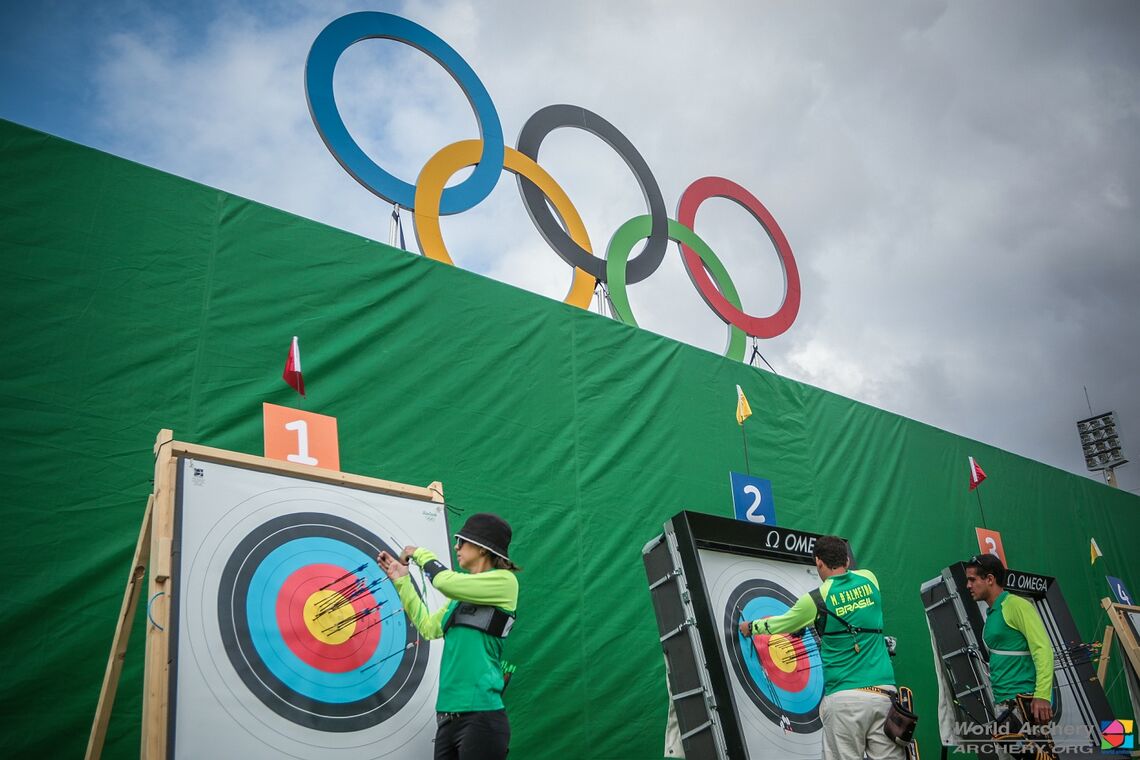
The best thing about imagery is that, unlike physical shooting where you need to be in a certain place with your equipment, the exercises are adaptable.
Imagery should not all be about competition and dealing with stress. It is a powerful tool for mastering your physical shot, too. We all know that making changes in our shot routine can be a real challenge – but those visualised repetitions contribute towards the time taken to learn a new skill.
At its core, imagery can help you sync in the changes better and faster.
But there are critical times during competition where imagery is the tool that should come quickly out of your kit bag.
If you’ve ever been to big tournaments, you know what it’s like shuttling back and forth to the field. That’s the perfect time to sit back and settle into some visualisation. On your way to the field, you can rehearse the upcoming competition. On your way back to the hotel, you can go through the competition once more, changing the negative things so that you reinforce the positive into your mind.
You can even go further, visualising a 10 before each arrow you shoot. When I have my fingers hooked on the string and I’m about to draw, the very last thing I do is rehearse the perfect shot.
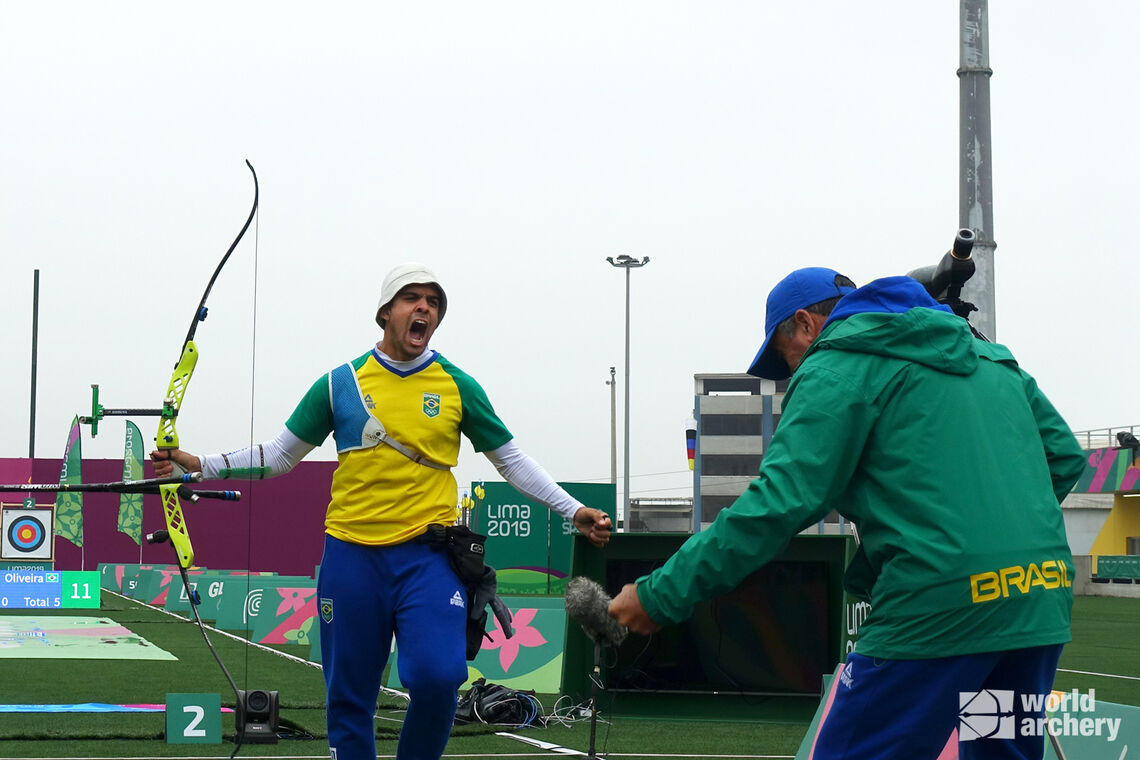
I see the arrow landing on the centre of the target, and I embrace the emotions of what a great shot feels like. It’s as quick as a blink of an eye – but it’s there. Doing it before every shot can be tough in the beginning but, if you want it there, it can become part of your shot routine and it will feel more natural in no time.
Your competitors are an important aspect of your imagery. The advice my psychologist gave me is to always visualise tough and close competition, never something easy, with me winning in the end.
In your mind, go through matches in which your competitor shoots great scores and you manage to just outscore him or her. Imagine shoot-offs, tied sets and ends, and matches going down to the wire – the toughest situations with the greatest pressure, with you prevailing in the end.
I often feel my heart racing after such imagery practices.
That’s my body reacting to something my mind has created – and it’s helping me train for the next time I need a little extra on the shooting field. It’s still just amazing to me how our minds can’t really tell reality from what we merely imagine.
That’s where visualisation’s power lies.
If you have any questions, insecurities or simply want to talk about anything I’ve said, feel free to reach out on email.
